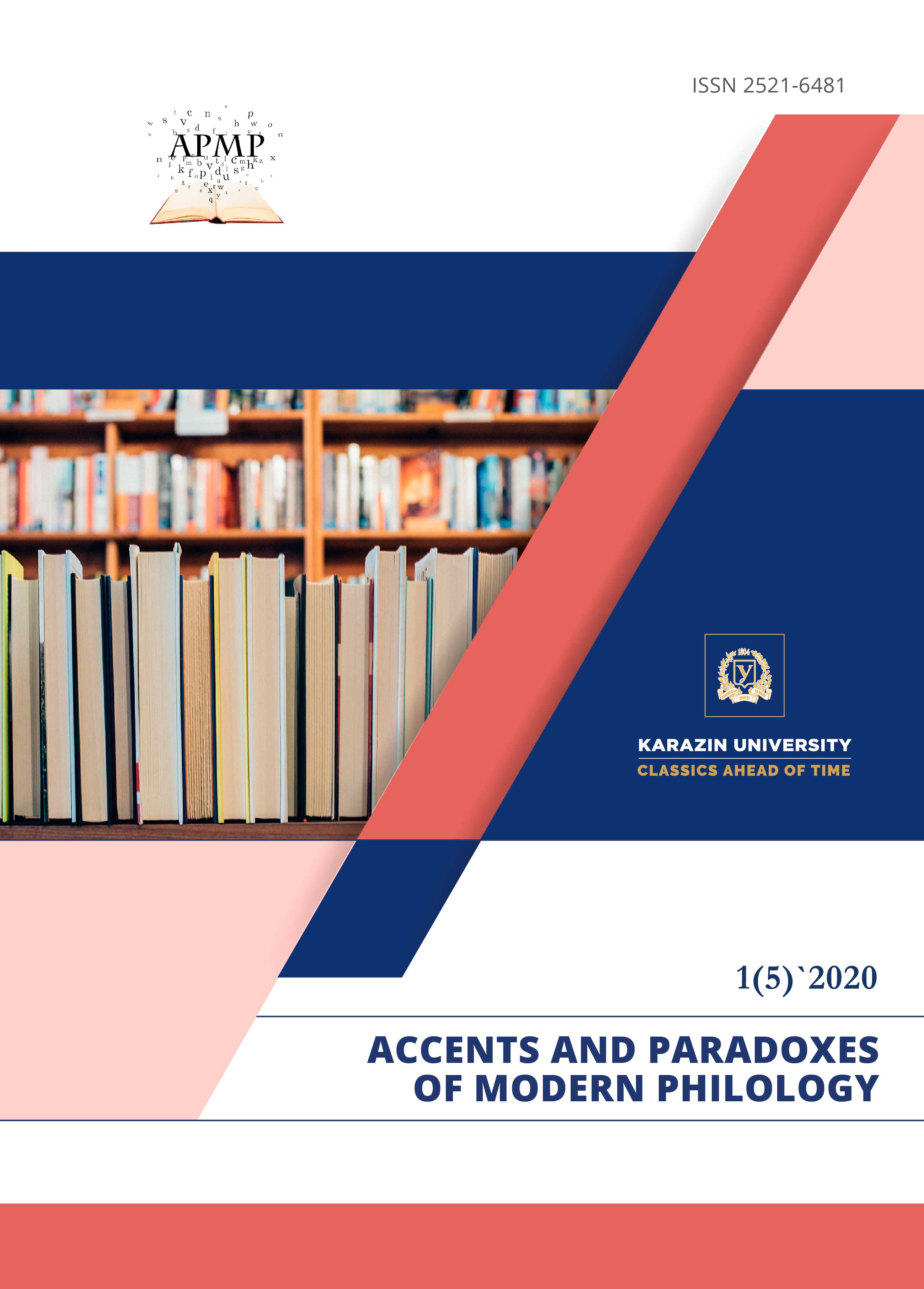THE PROBLEM OF BLURRED CORE BINARY OPPOSITIONS IN THE NOVEL ALL THE LIGHT WE CANNOT SEE BY ANTHONY DOERR
Abstract
The article deals with the problem of blurred boundaries of the core binary oppositions, namely "light / darkness", "childhood-adolescence / adulthood", "individual / collective", "duty / morality" in the novel All the light we cannot see by Anthony Doerr, which highlights the topicality of synergetic approach in modern comparative studies. The problem of blurring between the components of key binary oppositions is one of the moving forces in the analyzed novel, and is of significant novelty for further receptive practice. It is also emphasized that the author interprets the category of death in the analyzed novel, referring to the destructive strategy, aimed to show the goalless sense of death in the context of mass extermination of the population during wars. The category of life is shown in the context of absurd, where its such structural component as future is highlighted with fatalistic semantics. Categories of light and darkness also acquire a new artistic reflection in the analyzed work. The category of knowledge is represented in two semantic aspects – as a tool for cognition of the world to better understand it, and as a tool for destroying those who do not own it. The study of cognitive processes on the basis of verbal data, the separation of a separate layer of so-called tactile literature in the history of literature – one of the new milestones of literary studies. Anthony Doerr is not limited to a certain monoimage of death. Characteristically, in the novel we trace various alternatives to the thanatological image. Anthony Doerr achieves the effect of polyphony of the thanatological category in the novel All the Light We Cannot See through the image of death in the worldview and given experiences of each key character of his creative work. The only thing that unites all variants of the death image is complete lack of fear of possible death.
Downloads
References
Aries F. (1992). Man in the face of death. M. : Publishing group "Progress"-"Progress Academy". 528 p. (In Russian).
Demichev A. (1998). Deathland. Thanatos Figures: The Art of Dying. Articles. SPb.: SPbGU Publishing House. Pp. 51-57. (In Russian).
Doerrr E. (2016). All the light we cannot see: a novel; translated from English by O. Gordynchuk. Kharkiv: Book Club "Family Leisure Club". 352 p. (In Ukrainian).
Shvydka N. (2016). Archetypal-symbolic opposition of light and darkness in biblical discourse. Scientific Bulletin of Chernivtsi University. Vol. 769. Romano-Slavic discourse. Pp. 71-75. (In Ukrainian).
Zhornokui U. (2013). Eros and Thanatos in the Ukrainian-Polish literary dialogue (based on the prose of Valery Shevchuk, Jarosław Iwaszkiewicz and Michał Choromański): dis ... cand. in philol. science: 10.01.05. Kiev. 204 s. (In Ukrainian).
Veill A. (2016). ‘All the Light We Cannot See,’ by Anthony Doerr. The Washington Post. May 5. Resource available at: https://www.washingtonpost.com/entertainment/books/all-the-light-we-cannot-see-by-anthony-doerr/2014/05/05/c2deec58-cf14-11e3-a6b1-45c4dffb85a6_story.html]
Vollmann T. W. (2014). Darkness Visible. The New York Times. May 8. Resource available at: https://www.nytimes.com/2014/05/11/books/review/all-the-light-we-cannot-see-by-anthony-doerr.html
Yin M. (2019). All The Light We Cannot See by Anthony Doerr. Liza’s Study Guides. March 14. Resource available at: www.vcestudyguides.com/blog/all-the-light-we-cannot-see-by-anthony-doerr




